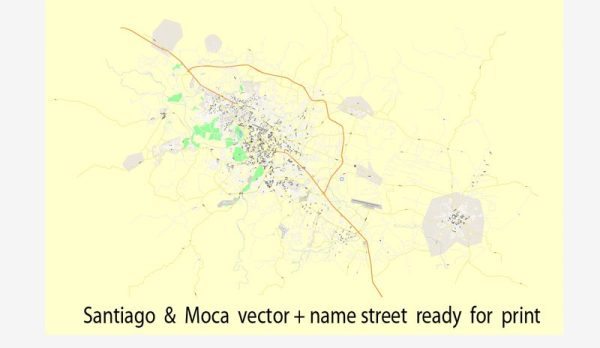As of my last knowledge update in January 2022, I don’t have specific details on the urban development of Santiago and Moca in the Dominican Republic. However, I can provide you with some general information about the history and urban development trends in the country up to that point.
Santiago:
Historical Background: Santiago de los Caballeros, commonly known as Santiago, is the second-largest city in the Dominican Republic. It has a rich history dating back to the colonial era when it was founded in 1495 by Christopher Columbus’s brother, Bartholomew Columbus. Santiago has played a significant role in the economic, cultural, and political life of the country.
Urban Development: Santiago has experienced substantial urban development over the years. As an economic hub, the city has seen the growth of industries, commerce, and infrastructure. The city’s urban planning has likely evolved to accommodate population growth, economic activities, and modernization.
Moca:
Historical Background: Moca is a smaller city located in the Espaillat province of the Dominican Republic. It was officially established as a municipality in 1865. While not as large or historically prominent as Santiago, Moca has its own cultural and historical significance within the region.
Urban Development: Moca’s urban development may have followed a more gradual path compared to larger cities like Santiago. The city likely experienced changes in infrastructure, housing, and services over time to meet the needs of its growing population.
General Trends in Dominican Republic Urban Development:
- Rural to Urban Migration: Like many developing countries, the Dominican Republic has experienced significant rural-to-urban migration. This has led to the growth of cities as people move from rural areas to urban centers in search of better economic opportunities.
- Infrastructure Development: Dominican cities, including Santiago and Moca, have likely seen improvements in infrastructure, such as roads, transportation systems, and utilities, to support urbanization.
- Economic Growth: Urban areas tend to be centers of economic activity, and the growth of industries and businesses has likely contributed to the development of both Santiago and Moca.
- Cultural and Social Changes: Urbanization often brings about changes in lifestyle, culture, and social dynamics. This is likely reflected in the development of public spaces, cultural institutions, and community services.
For the most up-to-date and detailed information on the history of urban development in Santiago and Moca, I recommend checking local historical records, municipal archives, or recent publications on Dominican urban history. Additionally, contacting local authorities or historical societies may provide valuable insights into the specific urban development trajectories of these cities.


 Author: Kirill Shrayber, Ph.D.
Author: Kirill Shrayber, Ph.D.